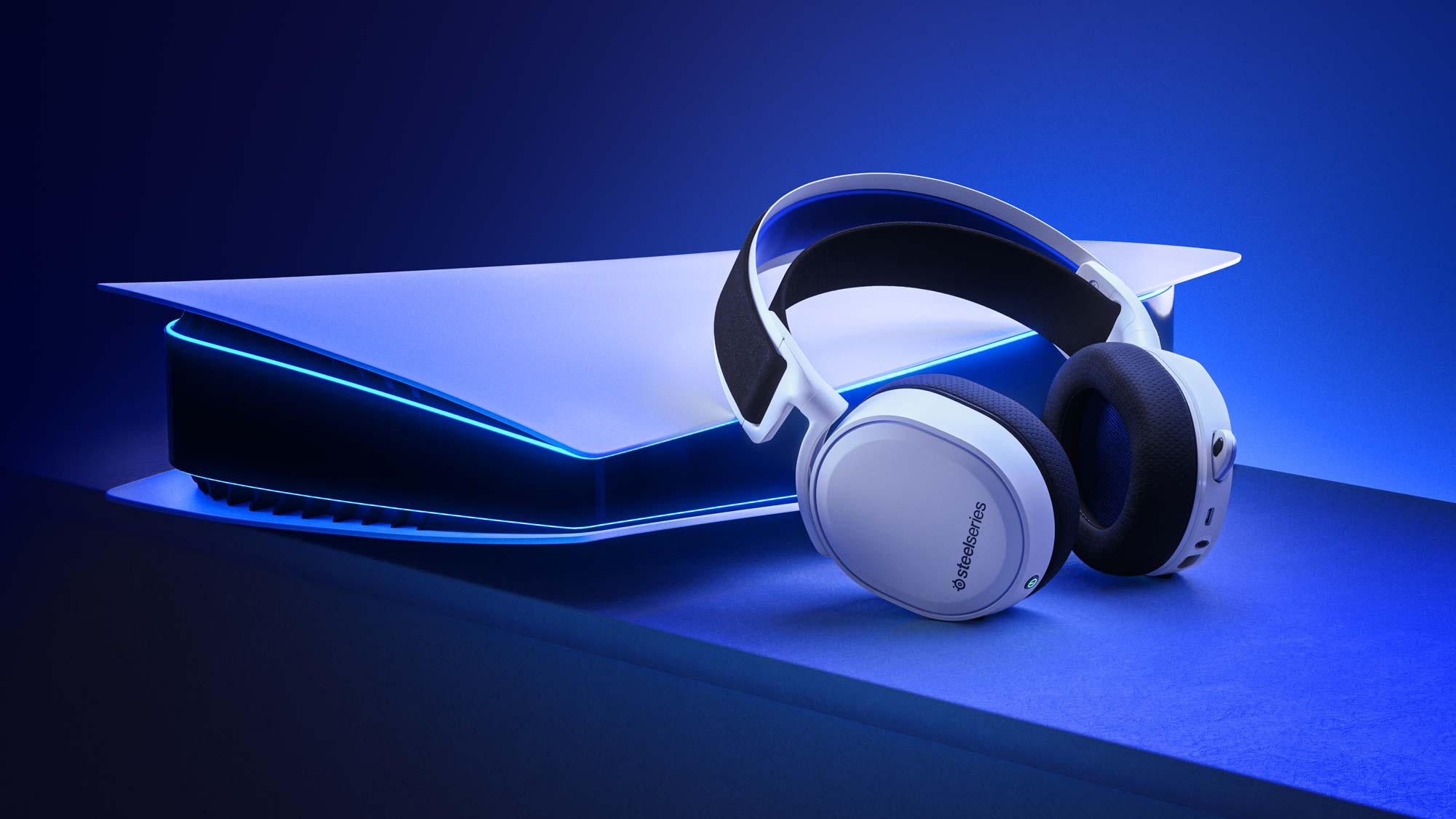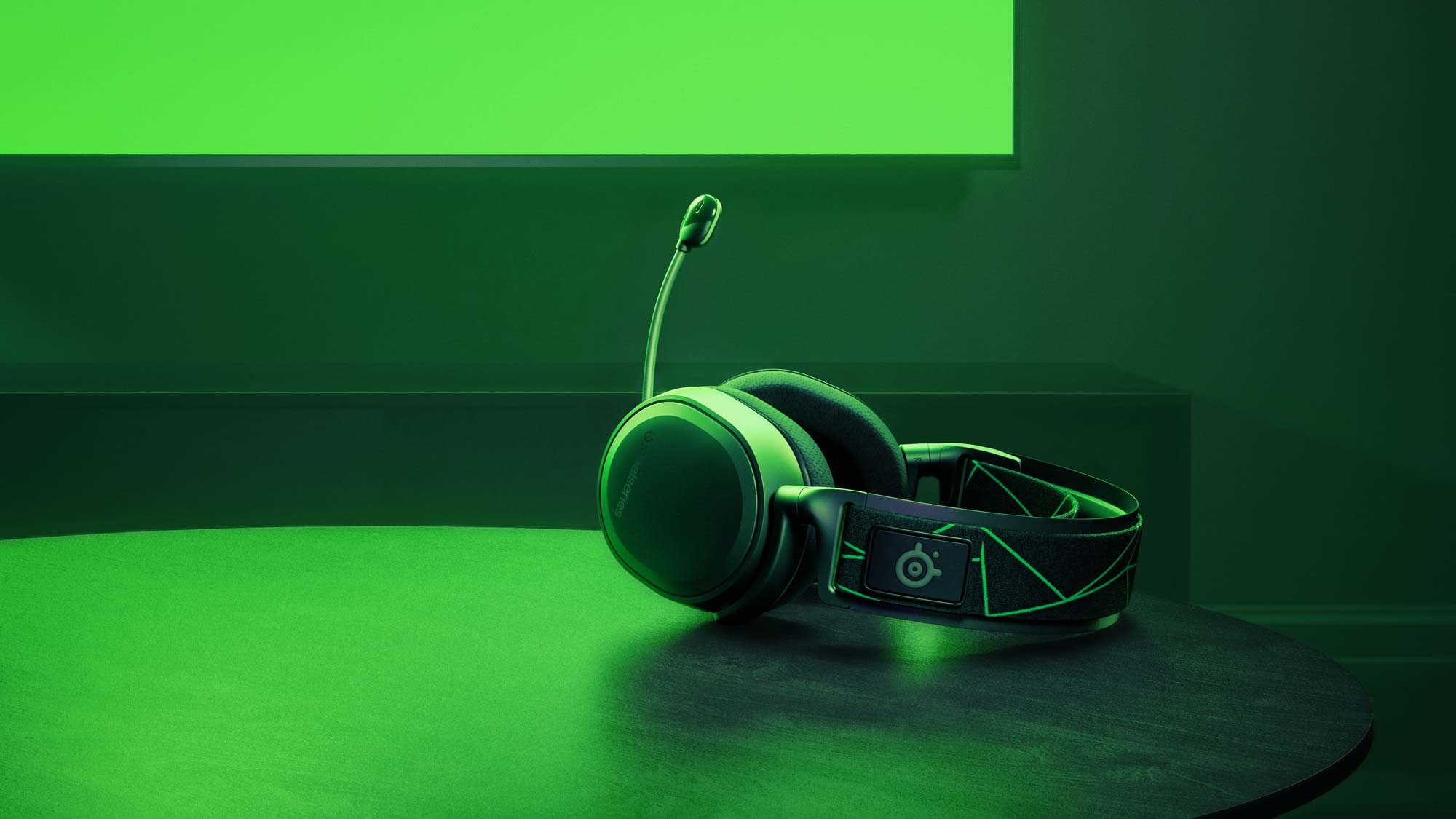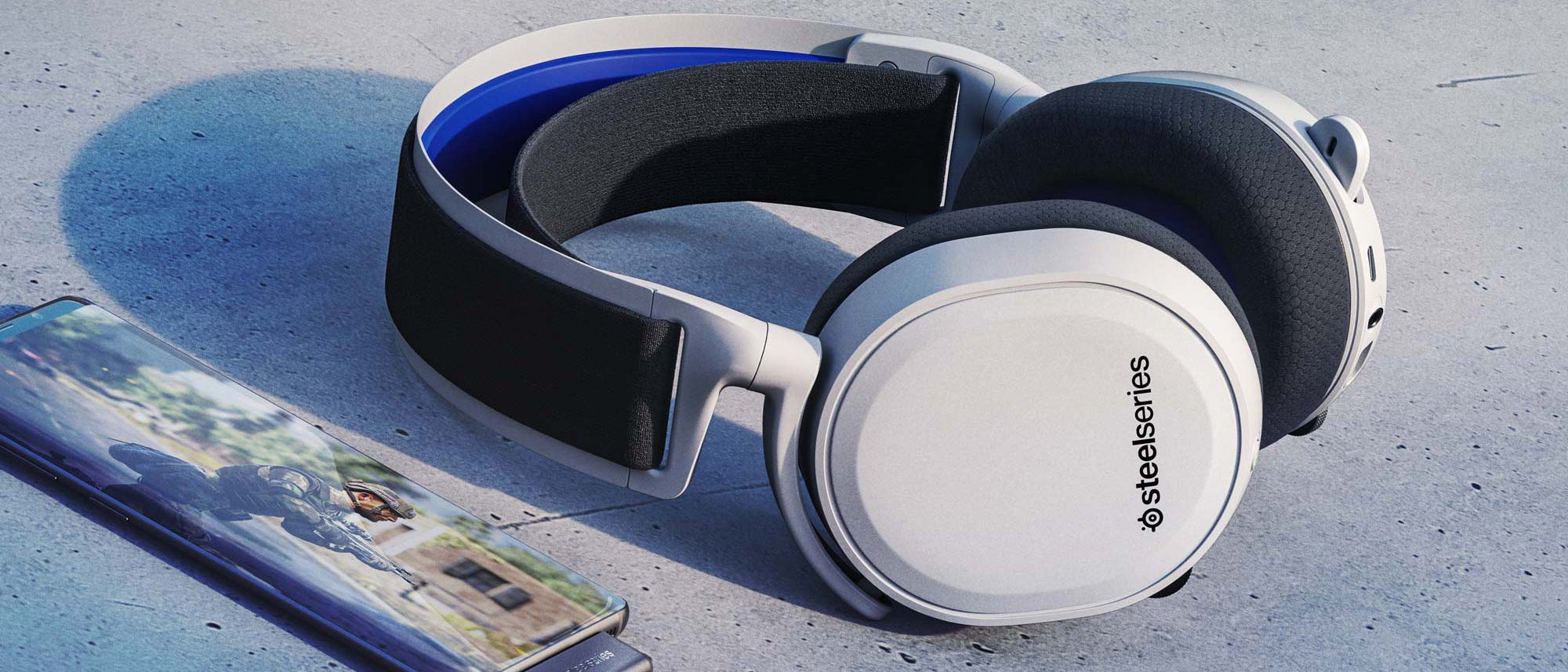Tom's Guide Verdict
The SteelSeries Arctis 7P/7X sounds great, fits beautifully, and works with almost every gaming system on the market.
Pros
- +
Works with just about every system
- +
Great gaming sound
- +
Comfortable fit
- +
Long battery life
Cons
- -
Music quality could be better
- -
7P model is less versatile than 7X
Why you can trust Tom's Guide
Compatibility: PC, PS4, Xbox One, Switch, Android
Drivers: 40 mm
Frequency Response: 20 Hz - 20 kHz
Wireless: Yes
The SteelSeries Arctis 7P/7X is very nearly the perfect gaming headset. On the one hand, that’s not shocking, considering that its predecessor, the SteelSeries Arctis 7, was already well on its way there. But in the three years since the Arctis 7 came out, SteelSeries zeroed in on the headset’s few lingering issues, eradicated them, and added a few helpful enhancements along the way.
The end result is a $150 headset that’s ready for both the PS5 and Xbox Series X, as well as any other system you own — PS4, Xbox One, Switch, PC, phone or tablet. With excellent wireless connectivity, a comfortable fit, long battery life and solid audio quality, the SteelSeries Arctis 7P/7X has absolutely everything a gaming headset needs to succeed, with no wasted features or confusing controls.
- Buy one of the best PS5 headsets
- See the best Xbox headsets
- The best Xbox Series X headsets right now
There are a few quibbles that keep the Arctis 7P/7X from absolute perfection. Three years later, the music quality is still underwhelming, something that other gaming headsets have rectified in the meantime. The 7P feels underfeatured, compared to the 7X, despite costing the same amount of money.
But otherwise, the Arctis 7P/7X is one of both the best gaming headsets and best wireless gaming headsets I’ve ever reviewed, and the sooner you can pick one up, the readier you’ll be for the next console generation. Read on for our full SteelSeries Arctis 7P/7X review.
SteelSeries Arctis 7P/7X design
The SteelSeries Arctis 7P/7X is remarkably similar to the original Arctis 7. It’s still a black plastic chassis with a thin steel headband and an elastic fitting strap. The 7P has blue highlights on the elastic to match the PS5; the 7X has green highlights to match the Xbox Series X. Otherwise, the two are almost identical.

The right earcup houses a sidetone volume dial on the 7P and a game/chat balance dial on the 7X, as well as a power button. The left earcup is where most of the action happens. Here, you have a mic mute button, a volume dial, a 3.5 mm audio port, a micro-USB charging port and a retractable, flexible microphone. There’s also a proprietary SteelSeries port for easier 3.5 mm audio and USB connections.
As with the original Arctis 7, this setup is admirably simple, and putting two different volume dials on two different earcups is much simpler than cramming them together, as some other hardware manufacturers do. Having a 3.5 mm audio option is also not strictly necessary, but still nice to have, in case you run out of batteries while playing a handheld Switch, or if you’re still finishing up some 3DS stragglers.
Get instant access to breaking news, the hottest reviews, great deals and helpful tips.

What sets the Arctis 7P/7X apart from most other gaming headsets is in how it connects. Instead of a USB-A dongle or the Xbox’s built-in wireless protocols, the Arctis 7P/7X relies on a USB-C dongle, with an included USB-A adapter. This essentially makes it compatible with any platform right out of the box — although the 7P isn’t compatible with any Xbox systems (more on this later). For the most part, the USB-C-plus-adapter setup works well, although it does create some unsightly trip hazards, depending on where your consoles are situated. Granted, you could always buy your own adapter instead, but I wonder whether SteelSeries could have included a dongle adapter rather than a wire.
The Arctis 7P/7X weighs about 12 ounces, so it sits very lightly on a user’s head. While there’s nothing fancy about the headset, there’s also nothing garish about it, and it would look perfectly natural out and about.
SteelSeries Arctis 7P/7X comfort
I’ve discussed the SteelSeries “ski goggles” elastic band design in other Arctis reviews, but it’s worth reiterating here. The SteelSeries Arctis 7P/7X doesn’t have any notches or expandable arms, relying instead on an elastic band for the perfect fit. You simply put the headset on your head, and the band conforms to the shape of your skull. You can tighten or loosen it slightly with a Velcro strap. That’s it. Not only is the process effortless, but it’s also incredibly convenient if you share the headset with a spouse or roommate.
In fact, I handed the headset off to my domestic partner, who used it to watch TV while I was working. She said it was easy to wear, and more comfortable than the SteelSeries Arctis 1 – her usual go-to.
SteelSeries Arctis 7P/7X performance
Like its predecessor, the SteelSeries Arctis 7P/7X works beautifully with every game genre. I tested it with a variety of games across a variety of platforms: Age of Empires III: Definitive Edition on the PC, Blasphemous on the Xbox One, Genshin Impact on the PS4, Hyrule Warriors: Definitive Edition on the Switch (both handheld and docked) and Tales of Crestoria on Android.

Without going into too much detail about each system, the Arctis 7P/7X’s performance was strong across the board. Whether it was dealing with colonial gunfire, cheerful anime dialogue or sweeping adventure scores, the Arctis 7P/7X did a great job of balancing voicework and music, with a rich, vibrant soundscape and a good balance between bass and treble.
My only complaint is about how the Arctis 7P/7X handles music. This was something of an issue with the Arctis 7 as well, and one of the only things that SteelSeries hasn’t improved between versions. Most music has sort of a flat sound that borders on “muddy” when things get loud or complicated. I listened to songs from Flogging Molly, Old Crow Medicine Show, The Rolling Stones and G.F. Handel, and while bass, treble and vocals all sounded distinct, there was a distinct lack of punch to everything, even with the “Music” soundscape selected in the SteelSeries Engine 3 software.
Granted, a gaming headset’s primary purpose isn’t to play music, but Logitech, Turtle Beach, HyperX and other competitors have both improved music performance over the last few years by leaps and bounds; SteelSeries hasn’t.
SteelSeries Arctis 7P/7X features
Through the SteelSeries Engine 3 software, users can customize equalization profiles, inactivity timeouts and mic options for the SteelSeries Arctis 7P/7X. The mic itself is a retractable design with a red light that lets you know when the input is muted. It picks up a little background noise, and can go heavy on “S” sounds, but it’s clear and responsive overall.

The software and mic work fine, but what’s more interesting is the Arctis 7P/7X’s wireless connectivity. What sets the Arctis 7P/7X apart from most other gaming headsets on the market is that it employs a USB-C dongle for pairing rather than USB-A. This means that it can connect with smartphones, tablets and Nintendo Switches in handheld mode. In my opinion, it’s a cleaner solution than Bluetooth, and works both quickly and seamlessly.
What’s odd, though, is that only the Arctis 7X model works with Xbox consoles — even though both the 7P and the 7X cost the same. Briefly: Xbox consoles use a different wireless protocol than other systems. As such, the 7X’s dongle has a small switch that you can toggle between “USB” and “Xbox” when you move it between platforms. The 7P’s dongle, however, doesn’t have this switch; its only advantage is that the dongle is a little smaller.
In other words: The Arctis 7X works with everything. The Arctis 7P works with everything except Xbox consoles. Unless you are absolutely, positively certain that you’ll never get an Xbox console, the 7X is a better buy all around. The 7P should have offered a bigger advantage than “a slightly smaller dongle,” or given buyers some kind of price break.
SteelSeries Arctis 7P/7X verdict
Our SteelSeries Arctis 7P/7X review covered the headset’s excellent fit, sound quality and connectivity — as well as its mediocre music performance, and the odd disparities between the PS5 and Xbox Series X versions.
Still, for all of that, the Arctis 7P/7X is a tremendously good headset, and an easy recommendation for PC and console gamers alike. It’s easily the best peripheral currently available in the $150 range — and even if you’d planned to spend $100 or $200 instead, it’s still worth a look. With a few small tweaks, whatever succeeds the Arctis 7P/7X could be as close as we’ve ever come to a perfect gaming headset.

Marshall Honorof was a senior editor for Tom's Guide, overseeing the site's coverage of gaming hardware and software. He comes from a science writing background, having studied paleomammalogy, biological anthropology, and the history of science and technology. After hours, you can find him practicing taekwondo or doing deep dives on classic sci-fi.

